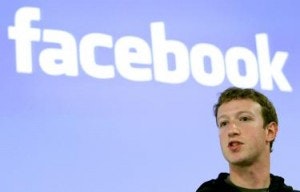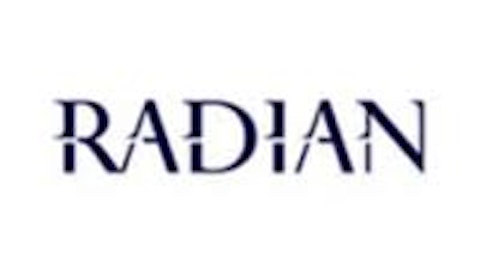
For the investor prepared to take a look across the pond, fast-growing tech companies like Facebook Inc (NASDAQ:FB), Apple Inc. (NASDAQ:AAPL), Tesla Motors Inc (NASDAQ:TSLA), LinkedIn Corp (NYSE:LNKD) and Amazon.com, Inc. (NASDAQ:AMZN) offer much more exciting prospects. But investing outside of your home currency carries the additional cost of conversion and an ongoing risk that future exchange rate movements will be unfavorable.
Are the potential rewards sufficiently attractive enough to outweigh the disadvantage of exchange anxiety? In my view, yes. Exchange rates may move either way, but in a global economy some regions may outpace others. In recent years the U.S. economy has outperformed the British economy, and investors nervous of exchange risks may miss out on higher absolute returns. As it happens, investors who bought in the U.S. market last year will have seen their returns boosted this year by the falling pound.
More importantly, experience shows that the best returns come from investing in ‘top dog’ disruptive companies with visionary CEOs. Finding companies like this is hard work in the UK, but in the innovative hotbed of the U.S. west coast they keep popping up like bluebells in the spring. In my view, if you find a company that is truly great, the decision to invest is automatic. Any residual concern about currency issues is nothing more than an irritation
Let’s take a closer look at some of the contenders.
Amazon is the world leader in e-commerce. Visionary leader Jeff Bezos is concentrating on building a highly-efficient, customer-centered, streamlined operation. Amazon has evolved from a bookseller to being the automatic choice for most online purchases. And it doesn’t stop there–Amazon.com, Inc. (NASDAQ:AMZN) now targets businesses as well as consumers, and Amazon Web Services opens up a fast expanding market with much higher margins than those available in online retailing.
Amazon.com, Inc. (NASDAQ:AMZN)’s long-term approach is commendable, but some hitherto patient investors are starting to ask if Amazon is ever likely to turn a profit. With a price to sales ratio (2.03) currently not too dissimilar to Apple’s (2.45), but with no prospect of making the healthy 25% margins that Apple makes, the stock may seem overvalued, especially as growth begins to gradually slow down. Fans point to the huge untapped world market that Amazon has yet to exploit. My investing preference is for companies with the potential for strong future growth. For me Amazon is already a little too large and its margins a little too thin. But some highly-regarded investors still see big things for Amazon, and I wouldn’t bet against them. And despite a lack of profits, it is worth noting that Amazon has delivered big returns for early investors.
If Amazon is the overvalued stock in our shortlist, Apple is by almost any measure the most undervalued. Benjamin Graham characterized the process of investing by inventing an imaginary figure with wild mood swings – Mr. Market. He would pop in to your office every day and make you an offer to buy or sell stocks. Some days he would be wildly optimistic as to price, some days massively pessimistic. A cool investor could prosper by ignoring Mr. Market’s gyrations and decide which stocks to buy or sell on a rational valuation.
Since September, Mr. Market has been a total downer on Apple Inc. (NASDAQ:AAPL). The main danger is that Apple Inc. (NASDAQ:AAPL) has become such a momentum stock that it never returns to a rational valuation, or that by the time it does it really will have suffered a severe decline in fortunes. Warren Buffett, Graham’s most famous protégé and probably the best investor ever, would argue that eventually the true valuation will come through (or in Graham’s words, the market may be a voting machine in the short term but it is a weighing machine in the long term).
At the recent low share price of $385 Apple Inc. (NASDAQ:AAPL) has a P/E of 8.5. The market perception is that Apple has stopped innovating and will lose market share to Samsung, which could cause a severe decline in revenue, as has recently happened to Nokia and Blackberry. But the market is ignoring the fact that only half of Apple’s revenues come from smart phones, that Apple Inc. (NASDAQ:AAPL) has a strong track record of releasing new and innovative products, and that this is likely to continue as it is spending $3.3 billion on research and development. Look out for an iWatch, iTV or iSurprise soon! Apple Inc. (NASDAQ:AAPL) also has plans to maintain its share of the global phone market, and, in any event, any drop in market share is likely to be outweighed by the strong growth in emerging markets where the Apple brand will be attractive to a newly affluent young generation. Apple does not really fit into my usual investment strategy, as it is already too big. But I have to admit that in this case I have taken a bite out of this particular fruit – at this valuation it is just too juicy to ignore.
Facebook needs little explanation from me. It has become the preferred method of communication for much of society, with many people spending several hours a day on its service. But as an investment it lost favor early when its initial offer price was cut in half by a skeptical market. It is a little early in the Facebook story to judge its merit using a conventional valuation. Like Google, which started out with no income but lots of users, Facebook Inc (NASDAQ:FB)’s future rests on its ability to keep and grow its user base and somehow turn it into cash.
Early signs are good. Skeptics point to early competitors like MySpace that went from market leaders to nothing, but Facebook has already grown to such a size that it would be difficult to imagine a rival service gaining enough traction to compete with it. Google’s turnover is currently ten times more than that of Facebook Inc (NASDAQ:FB). Because Facebook Inc (NASDAQ:FB) has more in depth data on its user base, fans would argue that it should be able to find more ways to profit from this and eventually match and possibly beat Google’s sales. If it can achieve the same 20% margin and trade at a P/E in the low 20s we would expect the current share price of around $25 to rise to $100 – a four-bagger.
All of this depends on Zuckerberg’s ability to keep users. Recent rumours about Facebook Inc (NASDAQ:FB) introducing auto-play video ads have been worrying for some who speculate that this may provide short term revenue, but drive away users in the long term. The future is uncertain for Facebook Inc (NASDAQ:FB), but as a disruptive top dog with a visionary CEO it has all the hallmarks of a potential big winner. Personally, I have taken a limited stake in the company that I may add to as the story unfolds.
Another player in the social market space, LinkedIn, targets a different market. Whereas Facebook is for social use, LinkedIn is for professionals interested in business and careers. LinkedIn Corp (NYSE:LNKD)’s revenue model is far more developed than Facebook’s. Because it has access to a wide base of detailed information on a huge number of business professionals, it can provide valuable information and access to candidates for businesses looking to recruit. It is disrupting the market in a big way – not only stealing business from online services like Monster, but muscling in on traditional recruitment agencies.
LinkedIn Corp (NYSE:LNKD) has been showing impressive revenue growth lately; 2010 revenue was $243 million, 2011 revenue was $522 million, and 2012 revenue was $972 million). But this barely scratches the surface of a worldwide recruitment market estimated at $369 billion. It also has the opportunity to add to its services and widen its revenue stream. The current P/E of 920 may look insanely high, but it is easy to imagine revenue growing to $10 billion within a few years. At a margin of 20%, this gives a $2 billion profit. A P/E of 20 would translate to a market capitalization of $40 billion, just over double the current market cap, suggesting a rise in share price from the current $175 to $366. And this could be just the start of a long term growth story. It is a personal favorite of mine and my largest holding.
Looking for a disruptor? How about a company looking to replace conventional, combustion-engine cars with vehicles running on batteries? Tesla is the top dog in the world of electric vehicles.
But does Tesla Motors Inc (NASDAQ:TSLA) have a visionary CEO? You bet. As well as revolutionizing the automotive industry, Elon Musk is a founder of PayPal, SpaceX and Solar City. And by the way, his ambition is to die on Mars (but, as he says, not on impact).
If Tesla Motors Inc (NASDAQ:TSLA) meets expected production targets of 20,000 units in 2013 (and so far it is on target to do so), this would equate to sales of $1.7 billion at an average selling price of $85,000. Musk estimates world demand for the Model S at about 40,000 vehicles per year. If we assume that the company reaches that production target in 2014 it would result in $3.4 billion for model S sales. The Model X will come on line shortly after adding similar revenues, and after that the ‘Gen III’ mass market car, which at $35,000 selling 100,000 units would add another $3.5 billion, creating total revenue somewhere in the region of $10 billion. At a net margin of 10% and a P/E of 10 this would give Tesla Motors Inc (NASDAQ:TSLA) a market cap of $10 billion, or a share price of around $81, as compared to $45 at the time of writing.
If you are lucky enough to live in the land of the free and the home of the brave, you can trade these wonderful companies without exchange anxiety.
That’s why I want to invest like a Yank.
The article Investing Like a Yank originally appeared on Fool.com and is written by Ian Richards.
Copyright © 1995 – 2013 The Motley Fool, LLC. All rights reserved. The Motley Fool has a disclosure policy.
